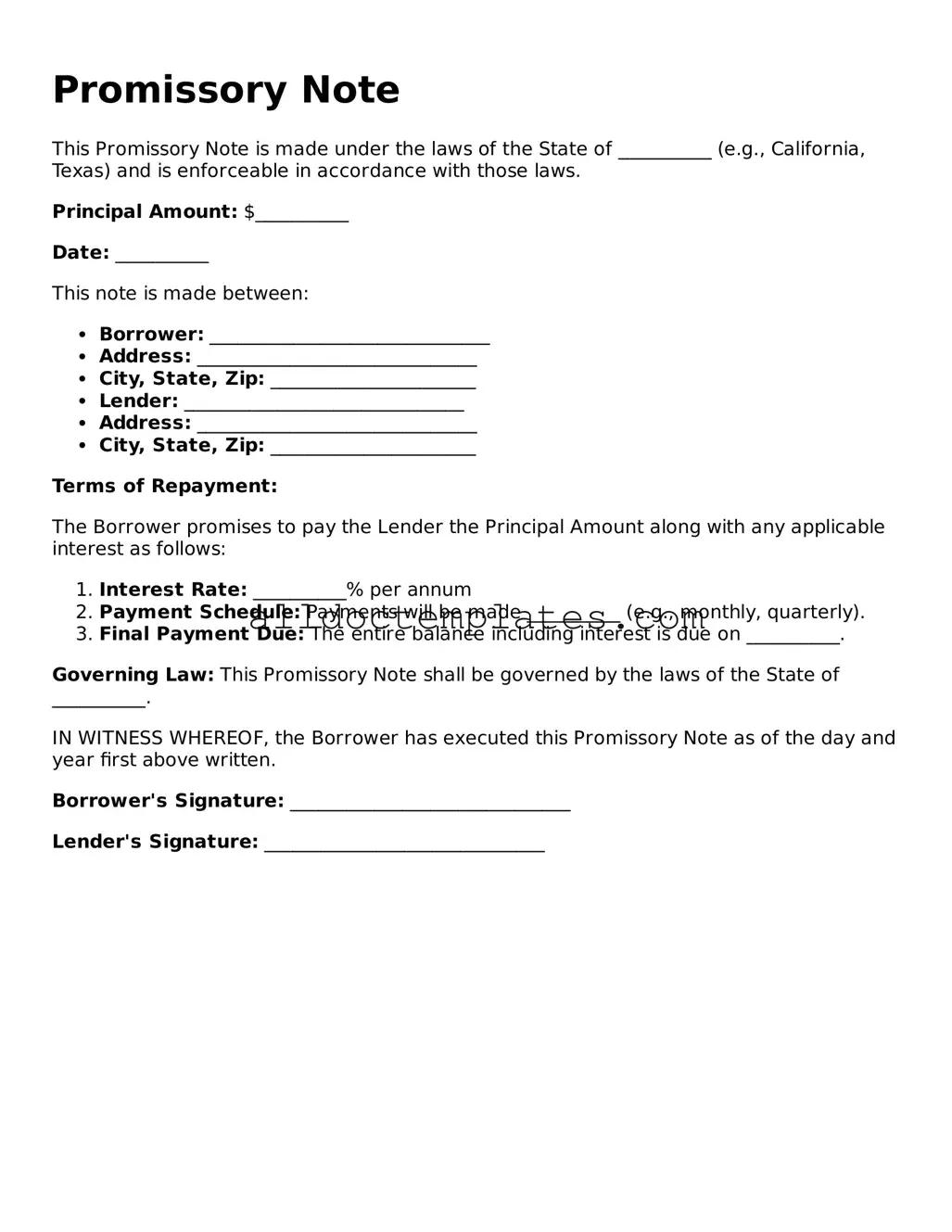Promissory Note
This Promissory Note is made under the laws of the State of __________ (e.g., California, Texas) and is enforceable in accordance with those laws.
Principal Amount: $__________
Date: __________
This note is made between:
- Borrower: ______________________________
- Address: ______________________________
- City, State, Zip: ______________________
- Lender: ______________________________
- Address: ______________________________
- City, State, Zip: ______________________
Terms of Repayment:
The Borrower promises to pay the Lender the Principal Amount along with any applicable interest as follows:
- Interest Rate: __________% per annum
- Payment Schedule: Payments will be made __________ (e.g., monthly, quarterly).
- Final Payment Due: The entire balance including interest is due on __________.
Governing Law: This Promissory Note shall be governed by the laws of the State of __________.
IN WITNESS WHEREOF, the Borrower has executed this Promissory Note as of the day and year first above written.
Borrower's Signature: ______________________________
Lender's Signature: ______________________________
